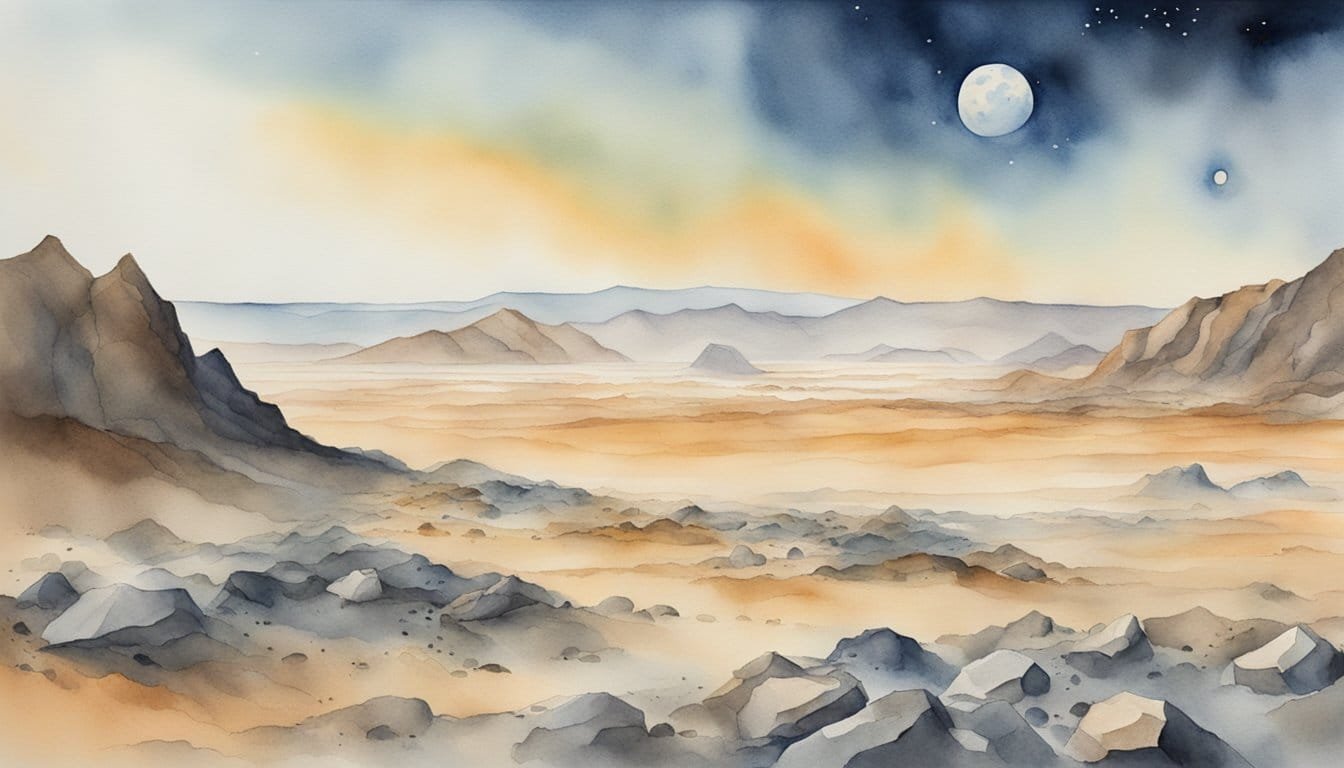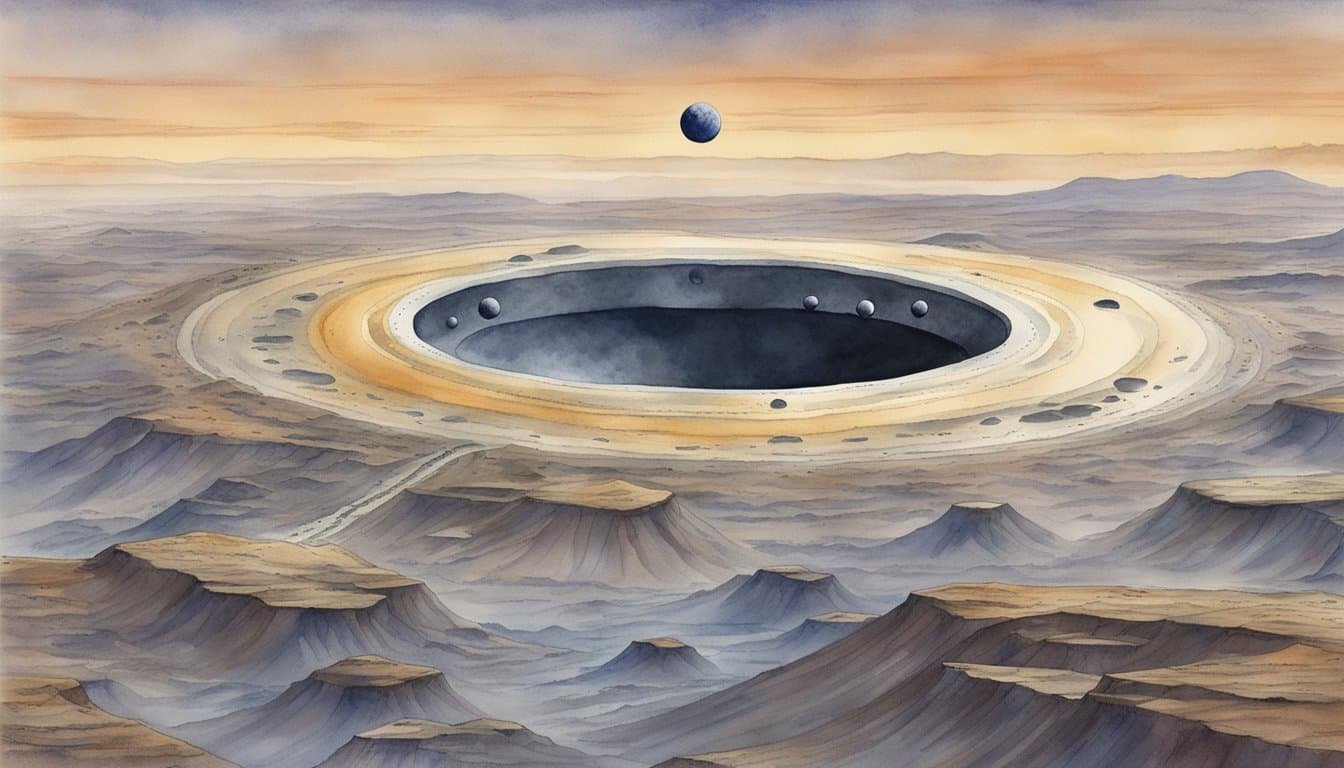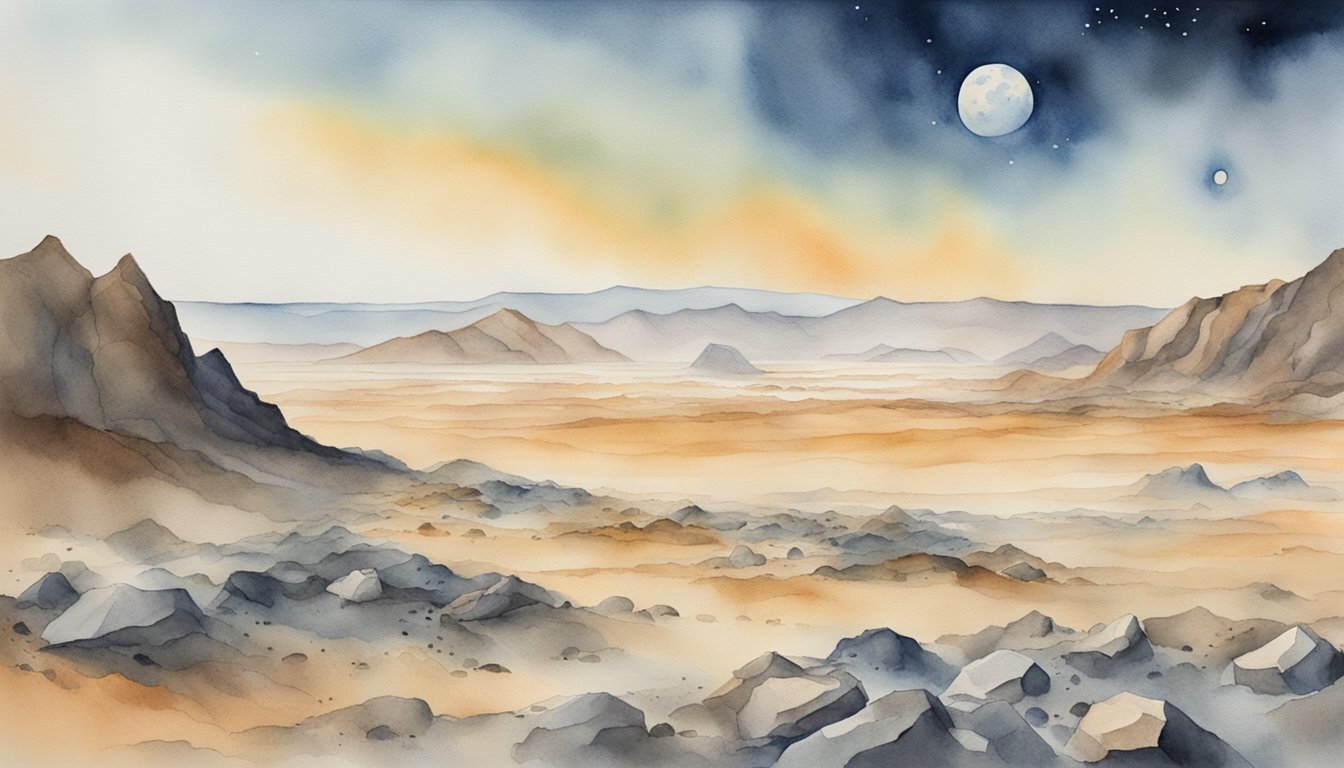Mercury Overview
Mercury is known as the smallest planet in our Solar System. Remarkably diminutive, with a diameter of about 4,880 kilometers, it’s not much larger than Earth’s own Moon. This tiny planet has a big presence considering its size, having a density only slightly less than Earth’s which hints at its large, iron-rich metallic core.
In contrast to its size, Mercury has quite the rapid rotation, speeding around the Sun in just 88 Earth days. Its proximity to the Sun — it’s nestled only about 57.9 million kilometers away — allows it to complete its orbit much quicker than the other planets. Despite this proximity, Mercury possesses an exosphere rather than a true atmosphere; it’s so thin that molecules can escape into space.
Let’s talk surface: Mercury is heavily cratered and has numerous ridges, extending up to hundreds of kilometers in length. Also, due to its slower 59-day-long rotation period relative to its year, a day on Mercury is quite protracted compared to an Earth day.
When discussing its internal structure, we find that Mercury is one of the terrestrial, or rocky, planets, which include its larger neighbors, Venus and Earth. Beneath its thin crust lies a mantle and a substantially large metallic core, making up a significant portion of the planet’s volume. This core contributes to Mercury generating a magnetic field, which is about 1% the strength of Earth’s.
Temperature-wise, Mercury’s not for the faint of heart. It experiences the biggest temperature fluctuations among the planets, with daytime temperatures soaring up to 430°C and nighttime dropping to a frigid -180°C. These extremes are due to the lack of a significant atmosphere to regulate temperature.
Lastly, residing in the inner Solar System, Mercury offers a compelling study in contrasts — from its slow rotation and fast orbit to its small size and surprising density. This rocky planet may be the smallest, but it holds a wealth of intriguing qualities that enthrall scientists and space enthusiasts alike.
Mercury’s Environment
Mercury, the smallest planet in our solar system, may be tiny but it has an environment full of surprises. From a thin atmosphere to a fascinating geological landscape, there’s much more than meets the eye in this swift planet’s vicinity.

Atmosphere and Magnetic Field
Mercury possesses a sparse atmosphere consisting mainly of oxygen, sodium, hydrogen, helium, and potassium. These atoms are whipped up by the solar wind, creating a tenuous layer that’s constantly being replenished and stripped away by the Sun’s influence. The planet’s magnetic field is about 1 percent that of Earth’s, which forms a magnetosphere that interacts with the solar wind, indicating Mercury’s dynamic interaction with its space environment.
Surface and Geological Features
Mercury’s surface is marked by extreme temperatures, swinging between blistering daytime heat up to 430°C (800°F) and frigid night-cold down to -180°C (-290°F). This results in one of the most extreme temperature environments within the solar system. The surface is littered with ice in permanently shadowed craters near the poles, a surprising find considering the solar day heat. Its geological features include vast smooth plains and craggy cliffs, formed both by ancient volcanic activity and the constant scouring from space weathering. Minerals such as magnesium and calcium are detected on the surface, altering our understanding of the planet’s history and its volcanic nature.
What Does the Size of the Smallest Planet Tell Us About the Nature of Planets in Our Solar System?
The size of the smallest planet reveals that planets can vary dramatically in size and composition, raising questions about their formation. As scientists delve into exploring the cosmic neighborhood count, they gain insights into the diversity of planetary systems and the conditions that lead to the creation of both small and massive worlds.
Mercury’s Exploration

Exploring Mercury offers a glimpse into the ancient history of our solar system, shedding light on the conditions of the early planet formation. Researchers utilize both ground-based telescopes and spacecraft missions to unveil Mercury’s mysteries.
Missions and Discoveries
Mariner 10 was the first spacecraft to visit Mercury, with flybys conducted in the 1970s. Images from Mariner 10 revealed a world covered in craters, similar to Earth’s moon, but it mapped only 45% of the planet’s surface. The mission also provided the first close-up photographs of the planet’s peculiar surface features, including long cliffs, or scarps, believed to have formed as Mercury’s core cooled and contracted.
NASA’s MESSENGER probe made history as the first to orbit Mercury. Launching in 2004, it reached Mercury’s orbit in 2011 and brought back a wealth of data, including the first complete maps of Mercury’s surface. MESSENGER revealed that Mercury’s thin crust is highly rich in magnesium and sulfur. The spacecraft also discovered water ice in permanently shadowed craters near the planet’s poles, a surprising find given Mercury’s proximity to the Sun.
Telescopes on Earth continue to observe Mercury. However, the planet’s small size and close proximity to the sun make it challenging to study from the ground. These ground-based observations complement spacecraft findings by tracking Mercury’s position, helping astronomers understand its orbit and rotation, a curiosity since the times of the Greeks who named it Hermes for its speedy movement across the sky.
The exploration of Mercury provides insights into the space environment of the innermost planet, revealing a dynamic world with an intriguing history of volcanic activity and impact craters that record significant events in the solar system. Beyond historical advances in understanding celestial movements, the latest expeditions to Mercury continue to examine its geological composition and potential for giving clues about the formation of Earth and other terrestrial planets.
For more details about Mercury’s exploration by MESSENGER, readers can explore MESSENGER’s pivotal discovery of water ice and its comprehensive mapping on Mercury’s surface. The legacy of Mariner 10’s initial reconnaissance of the planet is also available for those interested in the mission that paved the way for modern exploratory efforts.

